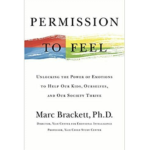Although we can’t improve our students’ working memory capacity, we can help them use the WM they’ve got more productively.
 We have lots of teaching strategies to accomplish this goal. Well-designed visuals, for instance, divide WM demands between visual and auditory channels. In this way, they functionally reduce cognitive difficulties.
We have lots of teaching strategies to accomplish this goal. Well-designed visuals, for instance, divide WM demands between visual and auditory channels. In this way, they functionally reduce cognitive difficulties.
Our students could also do what our colleagues do: use caffeine to boost cognitive performance. When I have my morning tea, that jolt of caffeine doesn’t increase my working-memory capacity, but it helps me use it better. (In the short term, the cognitive result is the same.)
Is there anything else we can do that doesn’t involve drugs?
So Crazy That It Just Might Work
How about exercise?
If caffeine jolts me awake enough to help me use WM more effectively, couldn’t old-fashioned exercise have that same effect?
Researchers in Canada wanted to know just that. Is exercise as effective as caffeine in temporarily boosting WM performance?
To answer this question, they did all the things you’d want them to do. They had different groups of participants take WM tests before and after different combinations of caffeine and exercise.
They controlled for age. They controlled for the amount of caffeine that people usually drank. They controlled for the amount of exercise that people usually did. (If you want all the details, you can read ’em here.)
The result: sure enough, exercise temporarily boosts WM function as much as caffeine does.
And, it doesn’t lead to a post-caffeine crash they way caffeine use does. (Yes: the researchers did measure “caffeine withdrawal symptoms.”)
In this case, 20 minutes of moderately paced walking did the trick. In schools, I’m thinking recess, or PE, or even passing time between classes just might serve the same function.
If we want our students to think more clearly, let them move.
But Can’t We Zap the Brain with a Gizmo?
Given the importance of working memory for schools, you’d think someone would make a brain zap app.
Oh wait, they have. Lots of times.
My friend Scott MacClintic just sent me a link to this “biolelectric memory patch,” which claims what you expect it to claim. (They have in-house research to show that it works!)
Happily, the article Scott sent me includes many reasons to be skeptical of this gizmo. If you’d like another set of reasons, you can check out this article over at JSTOR daily.
The short version is: recent decades have see LOTS of products claiming to enhance WM capacity. With alarming consistency, those products just don’t work. Lumosity’s wallet is $2,000,000 lighter after a fine for misleading claims. (You read that right: two million dollars.)
So, who knows, maybe at last this will be the brain gizmo that works. If I had two million dollars, I wouldn’t bet on it.
Until we get better research, we’ve got two proven strategies to help students use working memory well: skillful teaching, and exercise.



